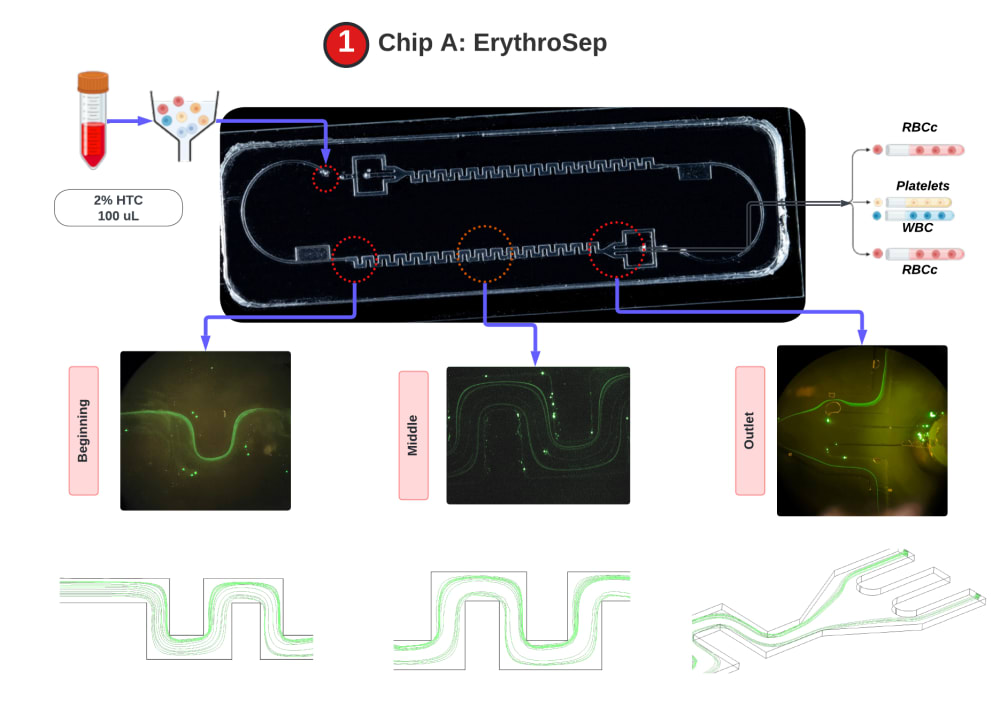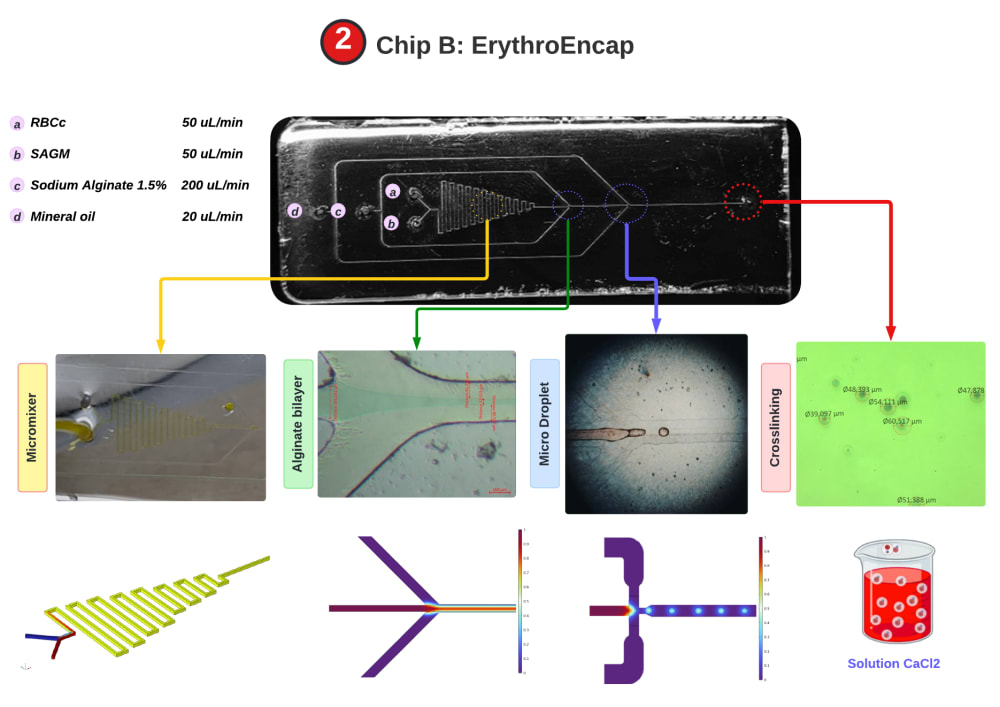
The storage of red blood cells in blood banks faces a significant challenge: cellular deterioration known as storage lesions. These biochemical and morphological alterations affect the erythrocytes' ability to transport oxygen, increasing risks for patients requiring transfusions. Conventional techniques such as centrifugation and mechanical filtration, although useful, often irreversibly damage the cells. To address this issue, we have developed a lab-on-a-chip that promises to transform blood storage.
This microfluidic device offers an effective solution to mitigate storage lesions in red blood cells. The lab-on-a-chip performs four essential processes:
- Separation: Separates red blood cells using inertial forces.
- Mixing and Focusing: Mixes and focuses the concentrated red blood cells with a preservative solution (SAGM).
- Alginate Bilayer Generation: Generates an alginate bilayer in a laminar flow regime that prevents fluid mixing.
- Microencapsulation: Utilizes a special oil that shears the flow, allowing the microspheres to fall into a calcium chloride solution, thus preserving the shape of the encapsulated cells.
The novelty of our idea lies in its automated approach and microencapsulation generation, which replaces large traditional centrifuges and manual processes. This device minimizes shear stress on the cells, significantly reducing cellular damage. Additionally, being automated, it minimizes sample handling and contamination. The microencapsulation process creates a controlled microenvironment that protects cells from mechanical stress and allows bidirectional diffusion of nutrients, oxygen, and waste.
The lab-on-a-chip has multiple applications: blood banks, clinical laboratories, biomedical research, and the manufacture of biopharmaceutical products. Its portability and accessibility make it ideal for general use, improving the quality of transfusion services and blood storage globally.
The market potential for this device is considerable, encompassing public health, biotechnology, and global health security. Its fabrication would be carried out using low-cost standard microfabrication techniques, such as 3D resin printing for mold creation. We use PDMS (polydimethylsiloxane), a biocompatible and bioinert elastomer, to allow visualization under a microscope and ensure good cellular compatibility. Finally, we employ a plasma chamber to bond the PDMS to a microscope slide, ensuring a robust and efficient structure.
The production cost of our device would be lower than traditional methods, thanks to miniaturization and the materials used. Being autoclavable and portable, it also reduces operational and logistical costs, making it more accessible and economical. Our lab-on-a-chip offers multiple benefits for the public good. It saves time and money by reducing the time and cost of diagnostics and blood preservation. Additionally, it improves the viability and quality of stored red blood cells, allowing for safer and more effective transfusions. The production of this device will generate employment and strengthen the economy while protecting the environment through the use of recyclable materials and efficient manufacturing techniques.
-
Awards
-
 2024 Top 100 Entries
2024 Top 100 Entries
Like this entry?
-
About the Entrant
- Name:Richard Calderon Bailon
- Type of entry:individual
- Patent status:none






